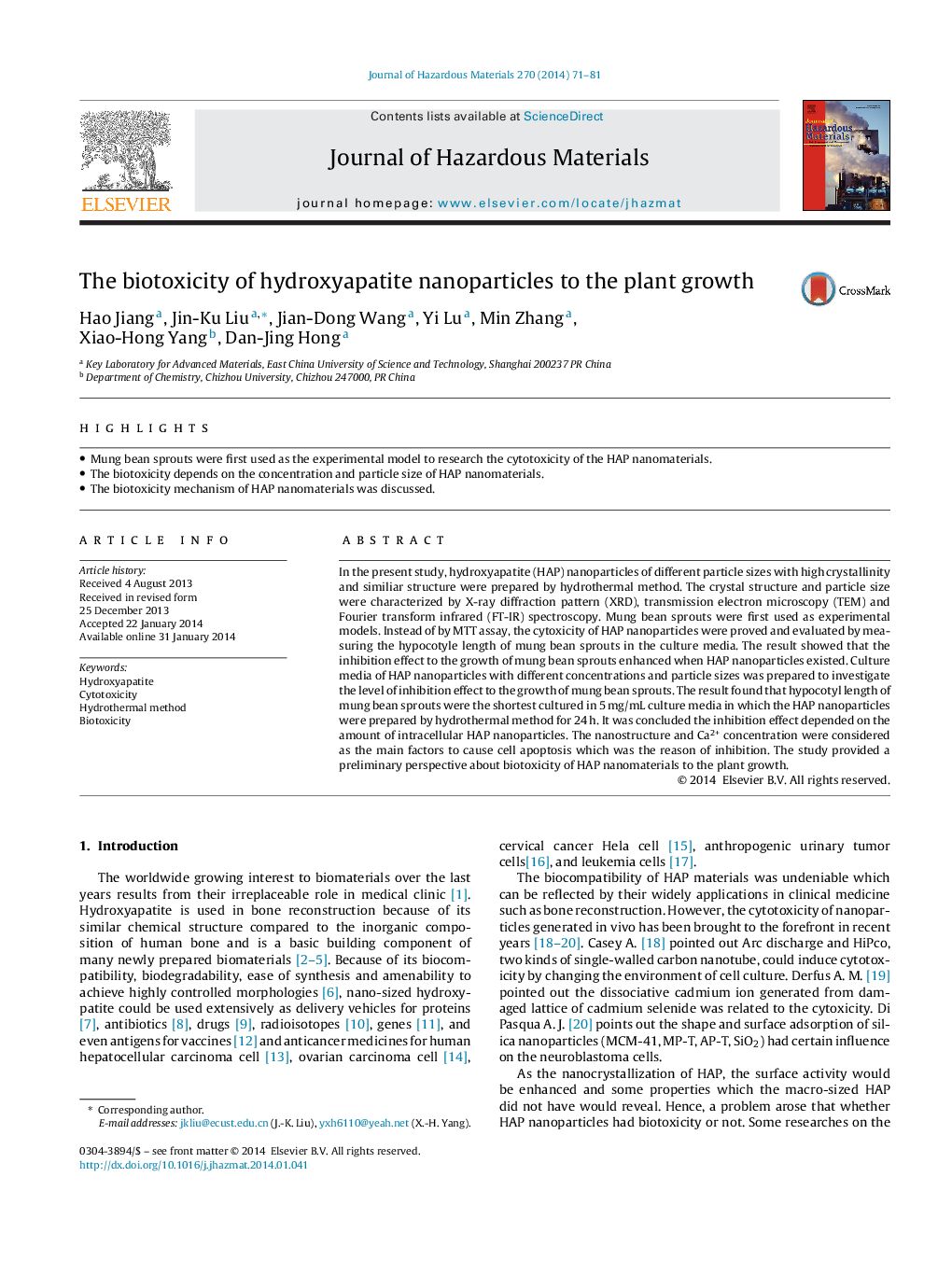| Article ID | Journal | Published Year | Pages | File Type |
|---|---|---|---|---|
| 576881 | Journal of Hazardous Materials | 2014 | 11 Pages |
Abstract
In the present study, hydroxyapatite (HAP) nanoparticles of different particle sizes with high crystallinity and similiar structure were prepared by hydrothermal method. The crystal structure and particle size were characterized by X-ray diffraction pattern (XRD), transmission electron microscopy (TEM) and Fourier transform infrared (FT-IR) spectroscopy. Mung bean sprouts were first used as experimental models. Instead of by MTT assay, the cytoxicity of HAP nanoparticles were proved and evaluated by measuring the hypocotyle length of mung bean sprouts in the culture media. The result showed that the inhibition effect to the growth of mung bean sprouts enhanced when HAP nanoparticles existed. Culture media of HAP nanoparticles with different concentrations and particle sizes was prepared to investigate the level of inhibition effect to the growth of mung bean sprouts. The result found that hypocotyl length of mung bean sprouts were the shortest cultured in 5Â mg/mL culture media in which the HAP nanoparticles were prepared by hydrothermal method for 24Â h. It was concluded the inhibition effect depended on the amount of intracellular HAP nanoparticles. The nanostructure and Ca2+ concentration were considered as the main factors to cause cell apoptosis which was the reason of inhibition. The study provided a preliminary perspective about biotoxicity of HAP nanomaterials to the plant growth.
Related Topics
Physical Sciences and Engineering
Chemical Engineering
Chemical Health and Safety
Authors
Hao Jiang, Jin-Ku Liu, Jian-Dong Wang, Yi Lu, Min Zhang, Xiao-Hong Yang, Dan-Jing Hong,
